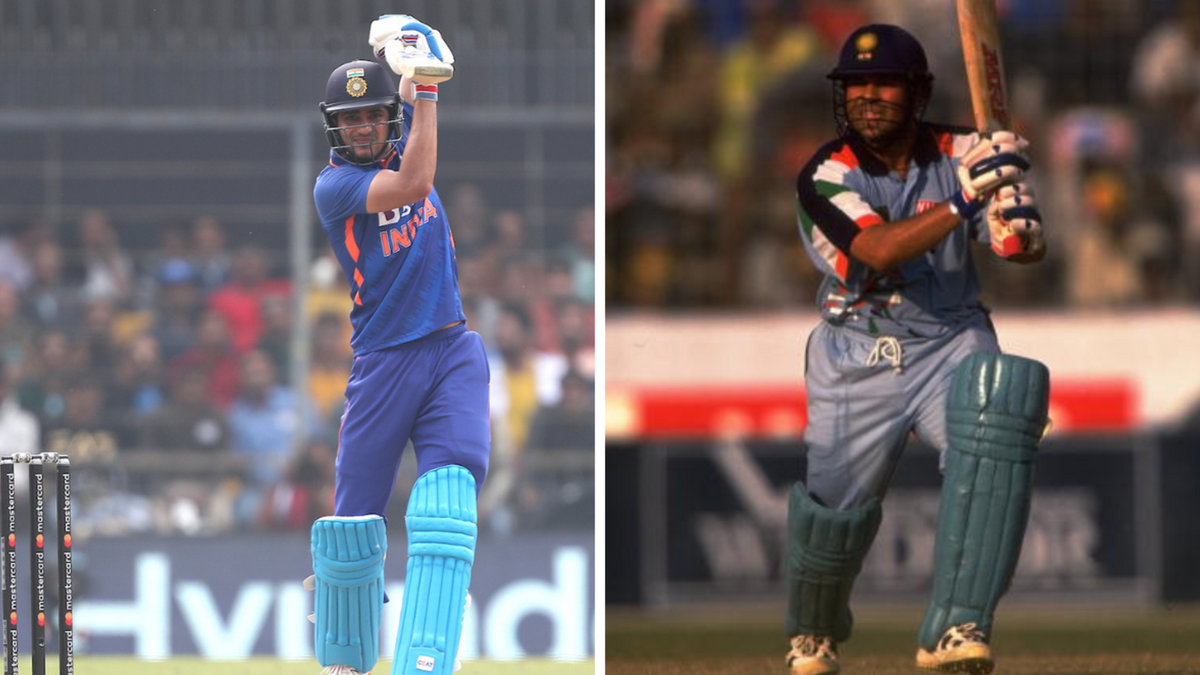
Shubman Gill has had a stellar start to 2023, scoring 567 runs in only six ODIs. Sarah Waris looks at whether the youngster can break Sachin Tendulkar’s records in 1998, when he ended with 1,894 runs – the most scored in a calendar year in the format.
In 1998, Sachin Tendulkar made 1,894 ODI runs, the most by anyone in a calendar year. These came in 34 matches at an average of 65.31. The Master Blaster maximised his purple patch with nine hundreds and seven fifties through the year, bettering his own record from 1996 when he had made 1,611 runs.
Sourav Ganguly and Rahul Dravid got close to breaking Tendulkar’s run-tally in 1999 when they amassed 1,767 and 1,761 runs respectively. In the recent past, a few players have threatened to overhaul Tendulkar’s feat but have fallen short. Rohit Sharma, who made 1,490 runs in 2019, has the most runs by a batter in a year since 2015, while Virat Kohli was in exceptional form in 2017, scoring 1,460 runs at an average of 76.84 – better than Tendulkar’s in 1998. However, he played fewer games (26) than the Mumbaikar and fell 434 runs short. If he had played the same number of games as Tendulkar, Kohli could have been in with a chance.
Shubman Gill is in with a chance, and his phenomenal start to the year now throws open the possibility of him challenging Tendulkar’s record. He currently needs 1,328 runs more – and at his current rate, averaging 113.40 in 2023, he’ll get there in 12 innings – though that is a tad unrealistic.
If fit, the 22-year-old will play a maximum of 26 more ODIs this year, if India reach the final of both the Asia Cup and the World Cup. He will need at least 51 runs per innings, less than half his current average, to score the remainder of the runs to overhaul Tendulkar’s achievement, which should be achievable considering the form that he is in. If India fail to reach the knockouts of the Asia Cup and the World Cup, they will play 23 ODIs. Gill will then have to score 58 runs per innings to break the record, which is still achievable.
Gill will also play a majority of his games in India and in the subcontinent, which should work in his favour. The next ODI assignments for India are against Australia (home), West Indies (away) and Australia again in September, in India. The Asia Cup is expected to be played in the United Arab Emirates and with the World Cup also in India, Gill will play all but three ODIs in familiar conditions. It further boosts his chances of scoring plenty of runs in the next 11 months.
The fact that Gill opens the innings should not be discounted either. It allows him the liberty to face as many deliveries as he can in an innings, anchor his knock accordingly, and get a big score. He currently strikes at over 126 on ODIs in 2023, which only indicates how well he is timing the ball and how he looks set to carry forward his form.
The fact that Gill, who made his ‘second debut’ in the format in 2022 and is only 21 games old, is already threatening a record that has stood tall for 24 years is testimony to his skills as a batter. Even if he is unable to break Tendulkar’s record in 2023, he is already being deemed as the heir to Kohli in ODIs with huge potential and promise and there will be plenty more years for him to target the feat.








